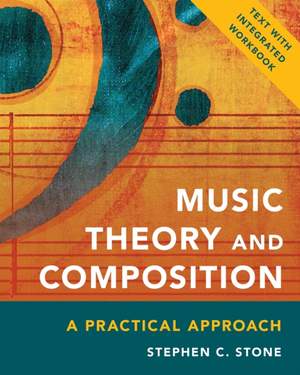Music Theory and Composition: A Practical Approach presents a pragmatic, accessible approach to music theory through an emphasis on melody and counterpoint. This focus explains the “why” of musical construction more clearly than the traditional approach of beginning with chords. By starting with a single melodic line and gradually adding voices in counterpoint, the book drills part-writing while simultaneously explaining functionality, first with scale degrees and then with harmony. The text has students learn musical techniques and progressively build on their functions and importance to create their own compositions. With short, digestible chapters, Music Theory and Composition clearly presents otherwise complicated ideas not as strict rules, but as artistic ideals, encouraging the interactive creation of new compositions as a tool for learning. The textbook is versatile and easily customizable, suiting oDifferent skill levels with species counterpoint providing a framework for the beginner while providing an interesting challenge for more experienced students oDifferent curricular schedules with complete exercises in two, three, and four voices, allowing for an optional skip from two voices to four oDifferent pedagogical approaches with species exercises encouraging students to consider harmonic choices and figured bass ensuring functional progressions Instructor Resources: (email textbooks@rowman.com for access) ·Instructor’s Manual: The Instructor’s Manual includes sample syllabi and student handouts ·Test Bank: The test bank includes sample tests and answer keys in MS Word format. Student Resources: ·Companion Website with Downloadable Workbook Sections: http://textbooks.rowman.com/stone Additional Features: ·complete curriculum for first-year theory courses ·over 500 musical examples drawn from Common Practice Era compositions as well as more contemporary and popular pieces ·focus on active composition throughout the text and workbook sections ·large pop music section to expand student’s application of theory ·conversational tone to encourage student engagement Designed for first-year college music theory courses, but accessible enough for the interested lay reader or high school student, the text offers a true balance of counterpoint and harmony.




